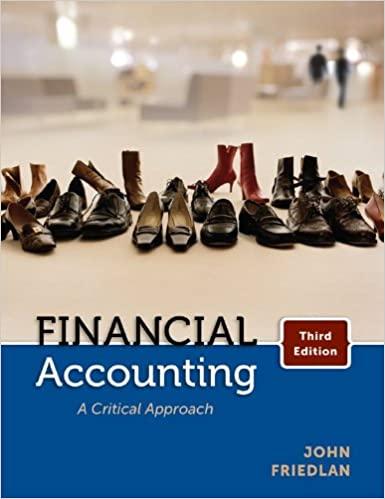


Buffer or Suffer: Optimal Ventilator Stockpile Level for Next Flu-related Pandemic/Lessons Learned from COVID-19 Pandemic November 15, 2020 Flu-related pandemics are not new phenomena and they have taken valuable lives of millions over centuries. These types of pandemics have demonstrated varying severities. The Spanish Flu, occurred at the end of 1918, caused approximately 50-100 million deaths, while the recent 2009 H1N1 pandemic (H1N1pdm09 virus) caused approximately 152,000-575,000 deaths, which exhibited much less severity, yet intensely concerning. During past centuries, the time between major flu- related pandemics (namely, their inter-arrival time) has been random with a maximum of 30 years. Regardless of their inter-arrival times and severities, it seems governments have never been prepared to overcome such pandemics in a timely fashion or to mitigate their enormities. It appears that after each pandemic, governments have learned their lessons for next pandemic, but when the next pandemic hits, we see that these lessons have not been properly assimilated, and current leadership is blamed for being incompetent. With high rates of hospitalization caused by pandemics, demands for medical equipment, e.g., personal protection equipment, critical care supplies, etc., significantly rise. Provided that the time and severity of pandemics are highly uncertain and the fact that the production capacity required to manufacture these medical supplies during pandemics are also uncertain, strategic na- tional stockpiling is central to preparedness against flu-related pandemics. COVID-19 is an ongoing flu pandemic that has already taken the lives of about 560,000 people globally at the time of writing this case), only four months after being announced as pandemic by the World Health Organization. COVID-19, like other flu viruses, causes mild-to-severe respiratory illnesses that can lead to death in server cases. Among various medical supplies needed to effectively treat flu-infected patients, and COVID-19, in particular, mechanical ventilators have proven to be essential medical equipment. They minimize the conceivable health damage to patients and maximize their survival rates. In fact, if ventilator access is denied to COVID-19-infected patients in critical conditions, they most likely perish. Given the two uncertainties involved in ventilator stockpiling decisions, i.e., the exact timing of next pandemic and its magnitude (demand for ventilators), governments face the following two risks (i) stockpiling too much or (ii) stockpiling too little. The former imposes significant financial burden to governments to purchase and maintain ventilators and the latter seriously jeopardizes the health and well-being of flu-infected patients who require intensive care and access to ventilators. Clearly, finding the right solution for such a trade-off is challenging. It goes without saying that the stockpiling too little may also yield detrimental impacts on the state of economy. This is so because less prepared governments need to enforce somewhat stricter measures to contain the virus and such restrictive and social distancing measures go against having a resilient and buoyant economy during Professors Sajjad Najafi and Vahid Roshanaei wrote this case solely to provide material for class discussion. The authors do not intend to illustrate either effective or ineffective handling of a managerial situation. The authors may have disguised certain names and other identifying information to protect confidentiality. Any form of reproduction, storage, or transmittal without written permission from the authors is strictly prohibited. Reproduction of this material is not covered under authorization by any reproduction rights organization. To order copies or requests permission to reproduce material please contact najafi@hee.fr or vahid.roshanaei@rotman.utoronto.ca. pandemics. However, for the sake of analytical simplicity and lack of relevant data, we disregard this factor and carry on with our analysis focusing solely on consequences of stockpiling decisions in terms of trading off the cost of acquiring and maintaining mechanical ventilators with that of human lives. One political expert pointed out that Operations Management (OM) techniques can be used as a remedy to help governments make a stockpiling decision that simultaneously balances these two competing risks. To illustrate the relevance and usefulness of OM techniques in strategic decision-making, we use ventilator demand data for the ongoing COVID-19 pandemic. As stated earlier, if ventilator access is denied to critical flu-infected patients, they most likely perish. We assign a cost equal to $9.3 million for each patient lost (due to unavailability of ventilators)-the standard number used by the federal government of United States of America that has been used in many economic studies. This cost must be traded off with the cost of acquiring and stockpiling mechanical ventilators that are to be used in ICU beds in time of next pandemic. The estimated cost of purchasing a high-end ventilator suitable for critical flu-infected patients is $60,000. This cost is not the only cost that governments need to consider; holding cost and salvage value must also be factored. Past pandemics and their inter-arrival times are precious sources of information for governments to find a reasonable estimate for holding cost. During past centuries, the maximum time between two successive major influenza pandemics has been 30 years; there also exists no specific pattern in the data. Thus, governments can safely assume that inter-pandemic times are uniformly distributed between 0 and 30 years, i.e., the probability that inter-pandemic periods is 2 years is equally likely for all 0









